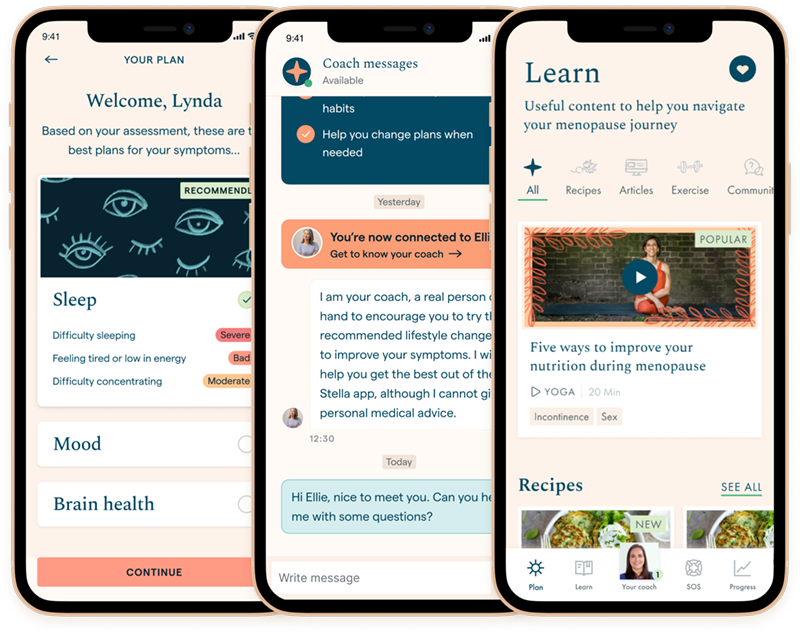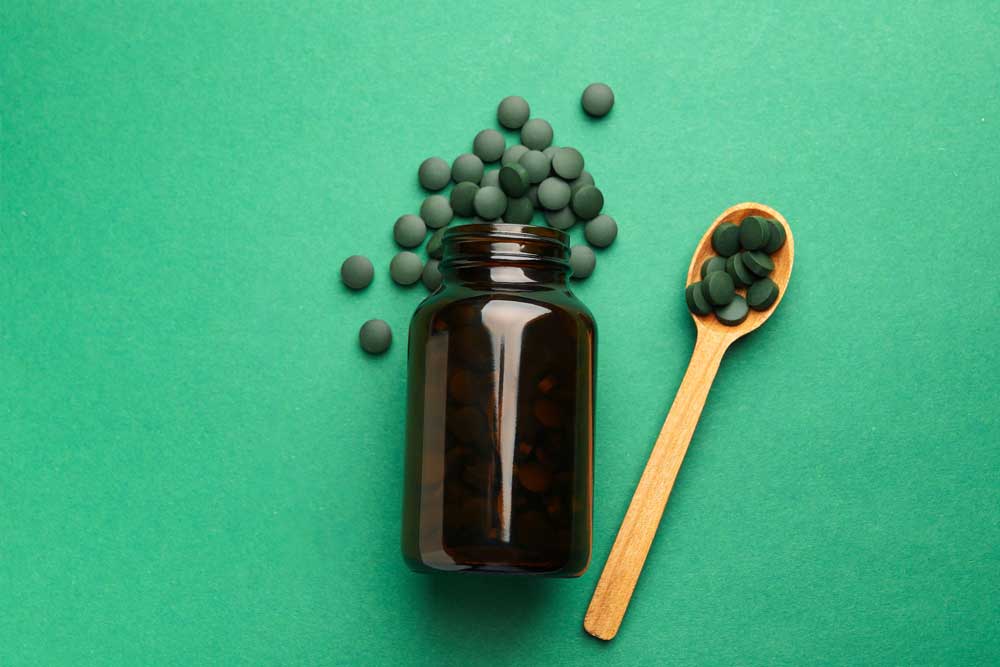Who doesn’t love a sweet treat? It’s no surprise we are all hooked on sugar, given how addictive it is. Sugar is added to foods to give sweetness and it stimulates the reward center in our brain, producing dopamine, making us feel good. But it’s also a really good idea to review just how much sugar you are consuming during your menopause journey and find out more about how menopause and blood sugar are linked.
Find what you need quickly
-
What does sugar do to your body?
-
Why is sugar an issue during perimenopause?
-
Can high blood sugar cause hot flashes?
-
How much sugar is OK?
-
What foods count as sugar?
-
How can you know how much sugar is in a product?
-
Tips for reducing sugar during menopause
-
What about foods with artificial sweeteners?
-
Final word
See what treatments are right for you
What does sugar do to your body?
When we eat foods containing high levels of sugar, we get an increase in blood glucose. This triggers a release of insulin which then signals the liver, muscles, and fat cells to take in the excess sugar. Some are stored as glycogen which is used for immediate energy needs. Any excess is converted to fat stores. The spike in blood sugar followed by a sudden drop can make you feel euphoric for a short time with a subsequent slump in energy.
Not only is this “sugar rollercoaster” exhausting, but over time it can increase food cravings, which can contribute to weight gain. Weight gain can increase your risk of type 2 diabetes, heart disease, and stroke. The good news is that addressing your sugar intake now can reduce your risk of chronic disease in later life.
Why is sugar an issue during perimenopause?
There are several reasons why eating sugar might exacerbate symptoms while your body is going through such a big hormonal shift. Here are some reasons why blood sugar and menopause can be linked, and why you might want to rethink how much of the white stuff you eat.
1. Sugar adds to your stress
Did you know that having a chronically high blood glucose level can increase a stress hormone called cortisol? High cortisol can be associated with worsening mood swings, anxiety, hot flashes, and depression.
2. You can’t tolerate sugar as well
Estrogen levels fluctuate wildly during perimenopause and once your periods have stopped, your levels stabilize at a significantly lower level. Low estrogen levels reduce your body’s sensitivity to insulin which means that you cannot clear sugar from the blood as efficiently. The impact of this is an increased risk of type 2 diabetes, weight gain, and poor mood.
Learn more about menopause and weight.
3. It’s messing with your beneficial bacteria
You have more bacteria than cells living in your body. The health of this microbiome is critical to our overall health. A high-sugar diet may encourage the overgrowth of the non-beneficial bacteria and allows these yeasts and bacteria to cause issues. Disruption of the microbiome in your gut, vagina, and urinary tract can increase the risk of urinary tract infections (UTIs) and yeast infections. Read more about the stages of menopause.
Can high blood sugar cause hot flashes?
There seems to be some link between high blood sugar and hot flashes during menopause. According to one study, women with higher blood sugar levels had more frequent hot flashes. The study included 3,000 women in their 40s and 50s over eight years and found the link regardless of their weight or estrogen levels. That doesn’t prove definitively that high blood sugar causes hot flashes, but if you find you’re having a hard time with them, then it might be worth cutting back on your sugar intake to see if that helps.
How much sugar is OK?
According to the latest government guidelines, adults should consume no more than 30g of sugar per day which is the equivalent of 7 teaspoons worth. To put this into perspective a single chocolate bar typically contains 6 teaspoons, a jam-filled doughnut is around 5 and a can of fizzy drink is as much as 8 teaspoons.
What foods count as sugar?
White sugar counts towards your daily sugar allowance but did you know that maple syrup, coconut sugar, honey, date syrup, dextrose, barley malt, and agave are all sugars too? There are approximately 75 different kinds of sugar and they all count!
Also, all dried fruits and juices count too. This is because dehydrating or breaking down fibers into liquid concentrates the sugar content and is a form of processing.
With some foods – sweets, fizzy pop, biscuits, and cakes – it’s obvious that they contain sugar. The danger is the hidden sugars. Foods to watch out for include hidden sugars in cooking sauces, condiments, cereal bars, cereals, and flavored yogurts.
See what treatments are right for you
How can you know how much sugar is in a product?
Getting familiar with the nutrition labels on foods is key to understanding how nutritious a food is and how much sugar it contains. First, you’ll want to be looking at the ingredients list to see if there is any sugar in the first three ingredients. If there is, it’s likely to have high levels.
Next, you’ll need to look at the nutrition grid. Go down to the row that says “carbohydrates – of which sugars” and go along to the column with the portion guide. This will tell you how many grams of sugar are in one portion of that food. Each 4g is equivalent to 1 teaspoon – aim to keep within the 7 teaspoon allowance each day.
Tips for reducing sugar during menopause
1. Understanding why you eat it
Have you ever considered why you opt for sugary foods? Is it as a comfort, a reward, boredom, or just a habit? Understanding why you get your sugar cravings is the first step in cutting down. If you know you are comforting yourself, consider what else might help that isn’t food-related such as a bath, calling a friend, or watching Netflix. If it’s down to boredom then what could you do instead to fill your time?
2. The power of rewards
Limiting sugar is hard. Putting some simple rewards in place can be a great way to motivate yourself. The only rule here is that the reward cannot be food or drink-related so you’ll need to stop and think. For example, to celebrate one week of eating less sugar, treat yourself to a bouquet of flowers, or after two weeks go buy that new pair of gym leggings you’ve been eyeing. Rewards that reinforce a healthy lifestyle are always a bonus!
3. Distraction techniques
Distracting yourself when you get a sugar craving can work well. Quite often you’ll be bored or tired and you’ll want to reach for a cookie or a chocolate bar. To use a distraction technique, you’ll need to come up with something that is going to keep you busy for 5 to 10 minutes as soon as you get a craving. It could be to walk around the block, run up and down a few flights of stairs, go and read a chapter of your book, or run the vacuum cleaner around the floors. Taking yourself away from the situation can allow the craving to subside. More often than not the moment will have passed and won’t crave that cookie anymore!
4. Healthy swaps
There are times when you do feel you need to have a snack or a sweet “pick me up” and that’s okay! It’s good to have a few options available that are low in sugar but are tasty and will hit the spot. Some simple ideas include:
- A small bowl of unsweetened yogurt with fresh berries
- Apple slices dunked in peanut butter
- A small handful of nuts or seeds with a few 70% dark chocolate chunks
- Some homemade reduced-sugar pancakes
Find out more about the best foods for menopause.
What about foods with artificial sweeteners?
Research into their safety is very mixed but ultimately, artificial sweeteners are chemicals and the body will likely struggle to process and eliminate them. Some research suggests they are linked to increased anxiety, can encourage weight gain, and are linked to degenerative brain disorders, type 2 diabetes, and heart disease. If you’d like to read about these research findings see the ‘Learn more’ section at the end of this article.
Both stevia and xylitol are plant-based but are often heavily processed and bleached. If you want to go for a sweetener, I would suggest raw ground stevia leaf which still contains its health benefits without the toxic element.
Artificial sweeteners include:
- Aspartame
- Sucralose
- Saccharin
- Sorbitol
- Mannitol
- Stevia
- Xylitol
Final word
Sugar can be a stress on the body and increased stress can exacerbate perimenopausal symptoms such as hot flashes, fatigue, weight gain, and anxiety. All kinds of concentrated sugar are going to have an impact, so it doesn’t matter if you are buying an expensive organic raw manuka honey or a cheap packet of granulated white sugar.
Limiting sugar isn’t easy but understanding which foods it’s hidden in and why you get your cravings is key for kicking the habit and keeping on top of your blood sugar during menopause. Having some healthy swaps will also help you to reduce your overall intake, get you off the sugar rollercoaster and most likely support your perimenopause symptoms.
Read more about menopause on our blog or in our symptoms library.













